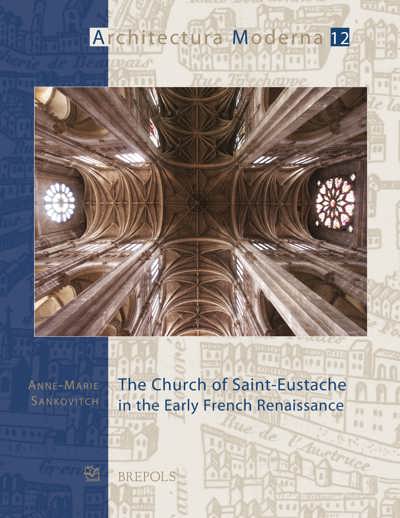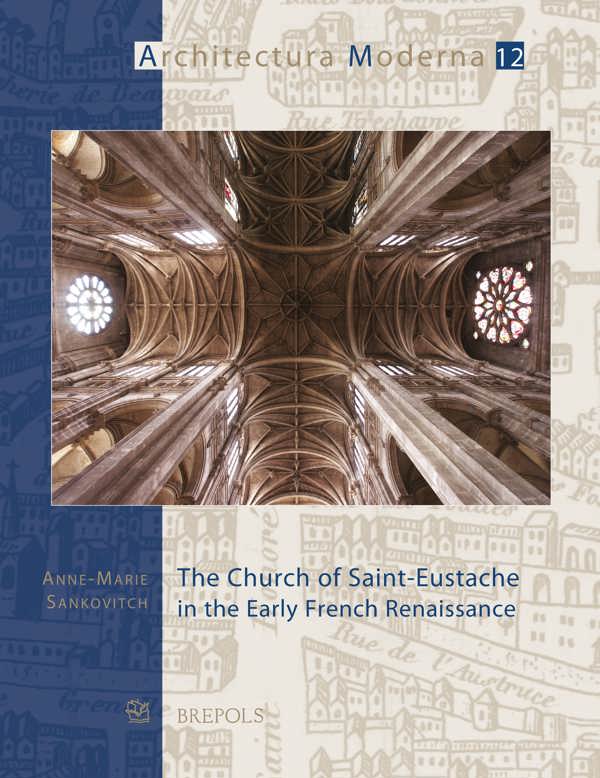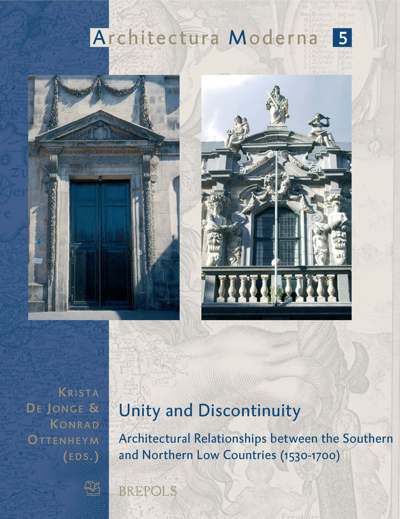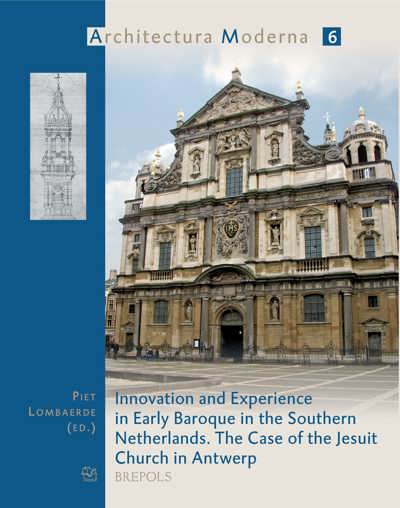
The Church of Saint-Eustache in the Early French Renaissance
Anne-Marie Sankovitch
- Pages: 240 p.
- Size:216 x 280 mm
- Illustrations:354 b/w
- Language(s):English
- Publication Year:2016
- € 120,00 EXCL. VAT RETAIL PRICE
- ISBN: 978-2-503-55514-0
- Paperback
- Available
- € 120,00 EXCL. VAT RETAIL PRICE
- ISBN: 978-2-503-56484-5
- E-book
- Available
« (…) il constitue un modèle de référence pour l’analyse de l’ornement sculpte, une véritable méthode pour mener une réflexion sur d’autres édifices. Cet ouvrage scientifique se lit agréablement, la pensée est brillante, l’écriture claire et incisive. L’illustration, abondante et de belle qualité, due le plus souvent à l’auteur, permet de suivre aisément l’argumentation. » (Evelyne Thomas, dans Bulletin Monumental, 3, 2017, p. 290)
« Ce livre permet ainsi aux travaux d’A.-M. Sankovitch d’occuper la place qu’ils méritent dans l’historiographie de l’architecture religieuse du XVIe siècle en France. » (Mathieu Lours, dans Annales, Histoire, Science Sociales, 72/1, 2017)
"Das Buch ist vorzüglich und reich mit Abbildungen ausgestattet, größtenteils von der Autorin selbst. Auch das Layout ist klug inszeniert. Erschienen in der renommierten Brepols-Reihe "Architectura Moderna", die Phänomene des Einflusses und Austausches in der Frühen Neuzeit untersucht, wird es zudem durch vier instruktive Vorwörter geadelt." (Alexander Markschies, in SEHEPUNKTE, 20/3, 2020)
A leading scholar in French Renaissance architecture, Anne-Marie Sankovitch (1958-2005) studied at Smith College and received her Ph.D. from the Institute of Fine Arts, NYU (1991), where she later became Research Associate. Her articles appeared in the Art Bulletin, RES, JSAH, and numerous conference volumes.
Considered the most important French Renaissance church, Saint-Eustache in Paris has long remained an enigma. What new circumstances allowed its parishioners, long desirous of a new church, suddenly to begin buiding it 1532? Did Francis I play a role? Was the obscure Jean Delamarre possibly its architect? Could the ideas of the Italian theorist, Serlio, have affected his design? These and other key issues are resolved by the author in a sustained reading of all known evidence. The baffling formal complexity of the church is clarified through lucid analysis that employs hundreds of new photographs executed by the author. The building is studied within the context of sixteenth-century French architecture and its roots in antiquity, the Italian Renaissance, Romanesque and Gothic France, and the Flamboyant Style. Sankovitch’s work will serve as a standard for all those who desire to understand this mysterious building and its times. A bright, clear window revealing an unseen architecture, previously an invisible – or at best murky – episode in the history of art, it is a portal to all future research on the building, and a key to the architectural life of the period.
Series Editor’s Foreword by Krista De Jonge
Foreword by Jean Guillaume
Response by Étienne Hamon
Anne-Marie Sankovitch and Saint-Eustache by Marvin Trachtenberg
Editor’s Acknowledgments
Anne-Marie Sankovitch, Publications 1994–2006
The Church of Saint-Eustache in the Early French Renaissance
Chapter 1: A Critical Historiography of Saint-Eustache
Chapter 2: Problems of the Site and the Struggle to Enlarge the Church
Chapter 3: A Royal Project: Saint-Eustache Unbound
Chapter 4: A Revised Building History, the First Master, and Serlio
Chapter 5: Toward the Identity of the Architect (Jean Delamarre?)
Chapter 6: The Presence of the Past at Saint-Eustache from Cluny to Pavia
Chapter 7: Gothic and Late-Gothic Strategies of Architectural Composition
List of Illustrations
Bibliography
Author’s Acknowledgments
Index
Photographic Credits




